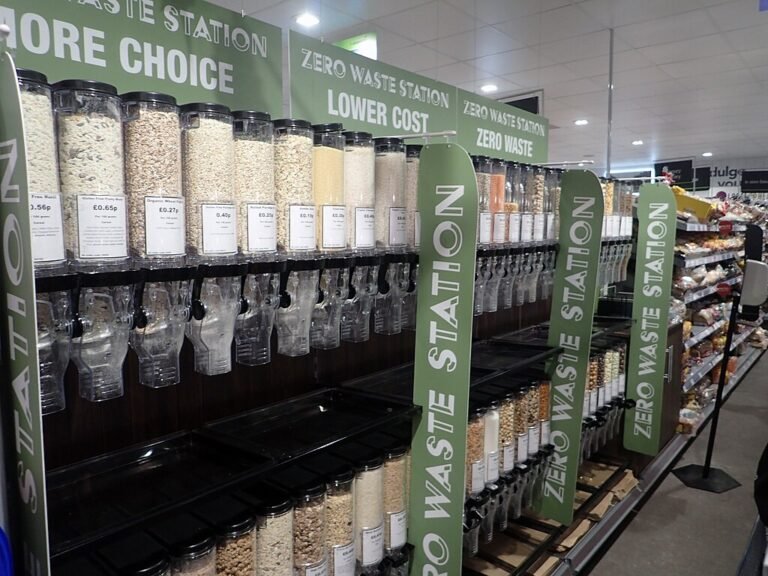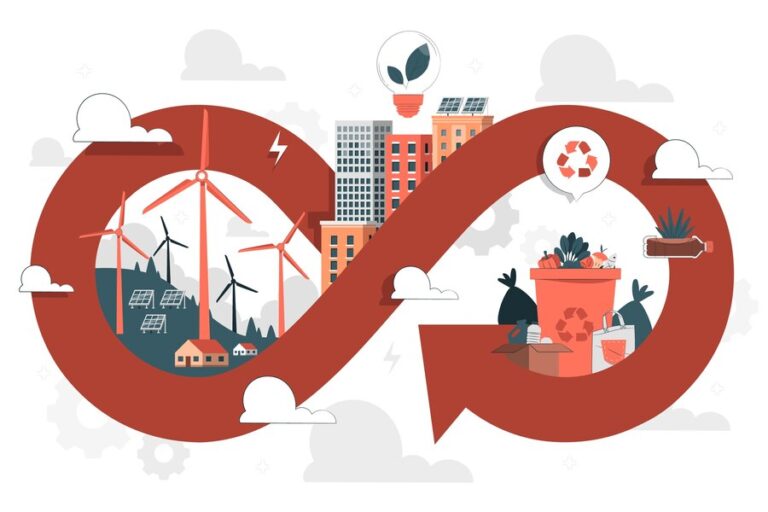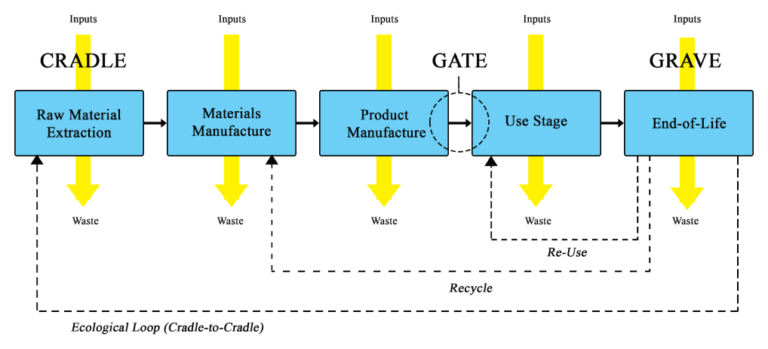Sustainable Practices in Retail: A Comprehensive Guide
Walking into a retail store today feels noticeably different from five years ago. The urgency for businesses to reflect environmental values has shifted from a trend to a clear-cut necessity. With consumer awareness at an all-time high, sustainability is no longer a bonus—it’s part of what defines brand trust. Those who lead with responsible practices earn loyalty; those who don’t fall behind.
A 2023 NielsenIQ survey highlights this shift: 78% of global consumers now consider a sustainable lifestyle important, and 64% are willing to pay more for environmentally friendly products. The message is clear—retailers must evolve or risk becoming irrelevant.
In this guide, we’ll offer grounded insights, real examples, and expert-backed strategies drawn from within the retail industry to help businesses grow with purpose and create lasting, positive change.

What Is Sustainable Retail?
Sustainable retail focuses on minimising harm and maximising positive impact throughout the entire product lifecycle. This includes sourcing raw materials responsibly, reducing waste in manufacturing, using eco-friendly packaging, cutting down on emissions during transportation, and encouraging recycling or reuse after purchase. It’s about creating a balanced system where environmental care, social responsibility, and economic success go hand in hand.
The Environmental Impact of Retail
Carbon Emissions
Retail, particularly the fashion sector, is a significant source of greenhouse gas emissions. The United Nations Environment Programme (UNEP) reports that the fashion industry alone accounts for approximately 10% of global carbon emissions, surpassing the combined emissions of international flights and maritime shipping.
Textile Waste
The issue doesn’t end with emissions. The Ellen MacArthur Foundation highlights that the fashion industry generates over 92 million tonnes of textile waste annually, equating to a truckload of discarded textiles every second. Alarmingly, less than 1% of this waste is recycled into new garments, with the majority ending up in landfills or being incinerated.
Plastic Waste
Retail also contributes significantly to plastic pollution. Single-use packaging, prevalent in both physical stores and e-commerce, adds to the growing plastic waste problem. While exact figures vary, the cumulative impact of packaging waste from the retail sector is substantial and concerning.
A Step Towards Sustainability: Zara’s Commitment
Recognising the environmental challenges, some retailers are initiating change. In 2019, Zara, under its parent company Inditex, pledged that by 2025, all its collections would be made from 100% sustainable fabrics, including organic cotton, recycled polyester, and sustainable linen. This commitment extends to all Inditex brands, aiming for 80% renewable energy use in their operations and eliminating single-use plastics by 2023.
While such initiatives are promising, the broader retail industry must accelerate efforts towards sustainability. As consumers, our choices matter. Opting for sustainable products, supporting brands with transparent practices, and advocating for environmental responsibility can drive meaningful change.
Core Pillars of Sustainable Retail
1. Ethical Sourcing and Supply Chain Transparency
Ethical sourcing goes beyond avoiding exploitative labour practices; it’s about ensuring fair wages, safe working conditions, and environmentally responsible production methods. Brands like Patagonia and Everlane have set benchmarks in this area.
Patagonia, for instance, has implemented a comprehensive supply chain monitoring program and launched a “No Fees by 2020” roadmap to eliminate worker-paid recruitment fees. They also utilise isotopic testing to verify the origin of their cotton, ensuring it isn’t sourced from regions associated with forced labour.
Everlane emphasises transparency by providing detailed information about its factories and the cost breakdown of its products. In 2018, they pledged to eliminate the use of virgin plastic by 2021, launching products like the ReNew line made from recycled plastic bottles.
2. Eco-Friendly Packaging
Packaging waste is a significant environmental concern. Innovative retailers are adopting sustainable packaging solutions, such as compostable mailers, plant-based inks, and reusable or returnable packaging systems.
Loop, a circular delivery service by TerraCycle, collaborates with brands like Nestlé and Unilever to offer products in reusable containers. Customers return the empty packaging for cleaning and reuse, reducing single-use waste.
H&M Group has committed to reducing plastic packaging by 25% by 2025 and ensuring all packaging is recyclable or reusable by the same year. They prioritise using recycled or sustainably sourced materials, aiming for 100% by 2030.
3. Energy-Efficient Store Operations
Retail stores consume substantial energy, but there are effective strategies to reduce this footprint. Implementing LED lighting, smart HVAC systems, and energy management software can lead to significant energy savings.
Target, a major U.S. retailer, has retrofitted nearly all of its 1,800-plus stores with over 2 million LED fixtures as part of a multi-year sustainability initiative. This effort, which began with a 100-store pilot in 2015, is projected to reduce the energy needed to power their stores by 10% annually—the equivalent energy consumption of nearly 40,000 homes.
Walmart has also made strides in this area. As of the end of 2023, 48% of their global electricity needs were supplied by renewable sources. They aim to power 50% of their global operations with renewable energy by 2025 and 100% by 2035.
4. Sustainable Product Lines
Offering eco-friendly products involves rethinking materials, production processes, and end-of-life disposal. It’s about creating products that are sustainable from inception to disposal.
IKEA has significantly advanced its sustainability initiatives by integrating more sustainable materials such as bamboo and recycled plastics into its products. In 2020, the company launched a furniture buy-back program, enabling customers to return used furniture for resale or recycling.
H&M has committed to using only recycled or sustainably sourced materials by 2030. They already utilise materials like Tencel™ lyocell, which is made from sustainable wood pulp in a closed-loop process.
Interactive Table: Key Retail Brands and Their Sustainability Commitments
| Brand | Commitment Highlights | Timeline | Third-Party Certification |
|---|---|---|---|
| Patagonia | 100% renewable energy, Worn Wear recycling program | Ongoing | Fair Trade, Bluesign |
| IKEA | Climate positive by 2030, circular economy programs | 2030 | FSC, Better Cotton Initiative |
| H&M | Use only recycled or sustainably sourced materials | 2030 | Global Recycle Standard |
| Walmart | Zero emissions across global operations | 2040 | Science-Based Targets |
Circular Economy in Retail: Reuse, Repair, Recycle
The circular economy is reshaping retail by focusing on keeping products in use longer and minimising waste. Instead of the traditional “take-make-dispose” model, this approach emphasises reuse, repair, and recycling.
1. Product Take-Back Schemes
Many retailers are implementing take-back programs, allowing customers to return used items for recycling or resale. For instance, H&M’s Garment Collecting program enables customers to drop off unwanted clothing in-store, promoting textile recycling and reducing landfill waste.
2. Repair Services
Extending the life of products through repair is another key strategy. Levi’s has established Tailor Shops in over 80 stores worldwide, offering services like denim repairs and customisations. These shops help customers maintain their garments, fostering loyalty and reducing the need for new purchases.
3. Upcycling Initiatives
Upcycling transforms old products into new, valuable items. Brands are encouraging creative reuse to minimise waste. For example, Levi’s provides resources for DIY upcycling, inspiring customers to personalise and extend the life of their denim.
The Role of Technology in Driving Sustainable Retail
Innovative technologies are enabling sustainability at scale:
1. Blockchain for Transparent Sourcing
Blockchain technology offers a secure and transparent way to track products throughout the supply chain. This ensures that materials are ethically sourced and that every step of the production process is accountable. For example, the Responsible Sourcing Blockchain Network (RSBN) utilises blockchain to provide transparency and trust in sourcing practices, particularly for minerals like cobalt.
2. AI to Optimise Logistics and Reduce Excess Inventory
AI helps retailers predict demand more accurately, optimising inventory levels and reducing waste. Companies like Onebeat use AI-powered platforms to analyse sales trends, enabling better decision-making in inventory management. This not only minimises overstocking but also reduces the environmental impact associated with excess production and storage.
3. IoT Sensors for Real-Time Energy Tracking
IoT devices allow retailers to monitor energy usage in real-time, identifying areas where consumption can be reduced. Smart sensors track detailed consumption patterns by device or system, allowing identification of inefficiencies and driving smarter energy use.
Social Responsibility and Community Engagement
Retailers are stepping up in meaningful ways, blending business with purpose to support both people and the planet. It’s not just about selling products anymore—it’s about making a positive impact where it matters most.
Take The Body Shop, for example. Since 1987, its Community Trade program has partnered with small producers worldwide, ensuring they receive fair prices for their ingredients and crafts. This initiative has uplifted communities by providing stable incomes and promoting ethical sourcing practices.
Beyond sourcing, The Body Shop has also supported environmental causes. In India, they collaborated with Plastics for Change, a startup aiming to create fair trade recycled plastic. Through mentorship and guidance, The Body Shop helped this venture connect waste pickers with global brands, turning plastic waste into valuable resources and improving livelihoods.
Other retailers are also making strides. Some organise community clean-ups, while others donate to environmental charities. These actions reflect a growing recognition that businesses can be a force for good, fostering stronger communities and a healthier planet.
Key takeaway: Social responsibility and community engagement are becoming integral to retail, demonstrating that success isn’t just measured in profits, but in positive change.
Challenges Retailers Face on the Road to Sustainability
- High Initial Costs: Transitioning to sustainable materials and retrofitting existing infrastructure can be expensive. For instance, moving production to countries like Bangladesh or Vietnam may lead to higher energy costs due to underdeveloped infrastructure, impacting overall pricing and supplier operations.
- Complex Global Supply Chains: Retailers often rely on intricate, global networks, making it difficult to monitor and ensure sustainable practices across all suppliers. Notably, 98% of retail’s carbon footprint stems from its extended value chain, highlighting the challenge of managing emissions beyond direct operations.
- Greenwashing Risks: Misleading sustainability claims can erode consumer trust and attract regulatory scrutiny. For example, Shein faced an investigation in Italy over allegations of greenwashing related to its “evoluShein” collection, raising concerns about the authenticity of its environmental assertions.
Despite these obstacles, many retailers are striving to overcome them by investing in renewable energy, enhancing supply chain transparency, and committing to genuine sustainability efforts. It’s a challenging path, but one that leads to long-term benefits for both businesses and the planet.
Measuring Success: KPIs and Sustainability Reporting
To truly make a difference, brands need to track their progress using clear, reliable metrics.
Key performance indicators (KPIs) help companies stay accountable. Common KPIs include reductions in carbon emissions, the percentage of products made from sustainably sourced materials, the amount of waste diverted from landfills, and the compliance rate of suppliers with ethical and environmental standards. These metrics provide a tangible way to assess and communicate a company’s environmental impact.
To ensure transparency and credibility, many organisations turn to established reporting frameworks. The Global Reporting Initiative (GRI) offers comprehensive standards that guide companies in disclosing their economic, environmental, and social impacts. These standards are widely adopted and help organisations communicate their sustainability efforts effectively.
Similarly, the Carbon Disclosure Project (CDP) provides a platform for companies to report their environmental data, particularly related to carbon emissions and climate change strategies. CDP’s disclosure system is recognised globally and is instrumental in helping organisations manage and reduce their environmental footprints.
Future Trends: What to Expect
1. Embracing Regenerative Retail
Retailers are moving beyond traditional sustainability towards regenerative practices that restore and revitalise ecosystems. This includes sourcing materials through regenerative agriculture, which not only reduces environmental impact but also enhances soil health and biodiversity. For instance, Patagonia are investing in regenerative organic farming to produce their cotton, aiming to improve the land they use rather than just minimising harm.
2. Growth of Rental and Resale Models
The concept of ownership is changing. Consumers, especially younger generations, are increasingly embracing rental and resale options for clothing and other goods. According to ThredUp’s 2024 Resale Report, the global secondhand market is projected to reach $350 billion by 2028, highlighting a significant shift towards circular fashion models.
3. Increased Scrutiny on Sustainability Claims
With the rise of greenwashing concerns, regulatory bodies are tightening guidelines around environmental claims. In the European Union, for example, companies are facing stricter regulations to ensure that sustainability claims are substantiated and transparent. This means retailers must be more diligent in verifying and communicating their environmental initiatives to maintain consumer trust.
Learn More: Learn More: Why Are Sustainable Products More Expensive?
Conclusion: Actionable Takeaways for Retailers
- Audit Your Supply Chain
Begin by mapping out your entire supply chain. Regular audits help identify environmental and ethical risks, such as poor labour practices or high carbon footprints. According to Sedex, sustainable procurement involves selecting suppliers who prioritise eco-friendly practices and fair labour standards. - Start Small, Scale Wisely
You don’t need to overhaul everything overnight. Simple changes like switching to energy-efficient lighting, reducing packaging waste, or educating staff on sustainability can make a significant impact. These manageable steps can serve as a foundation for broader initiatives. - 3. Engage Stakeholders
Involve employees, customers, and suppliers in your sustainability goals. Engaging stakeholders fosters collaboration and ensures that sustainability efforts align with the values and expectations of those involved. - 4. Invest in Technology
Leverage tools like Life Cycle Assessment (LCA) software, blockchain, and AI to gain insights into your products’ environmental impacts. These technologies can streamline data collection and enhance decision-making. - 5. Be Transparent
Communicate your sustainability efforts openly and honestly. Transparency builds trust with consumers and holds your business accountable.
Embracing these steps not only contributes to environmental and social well-being but also positions your business for long-term success.







